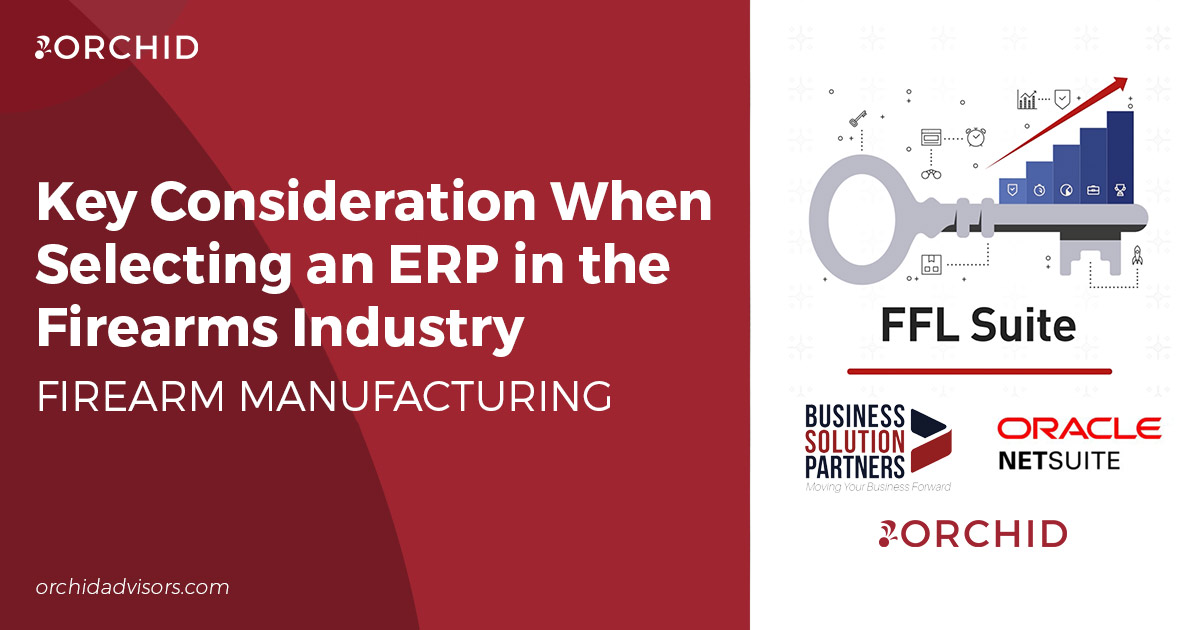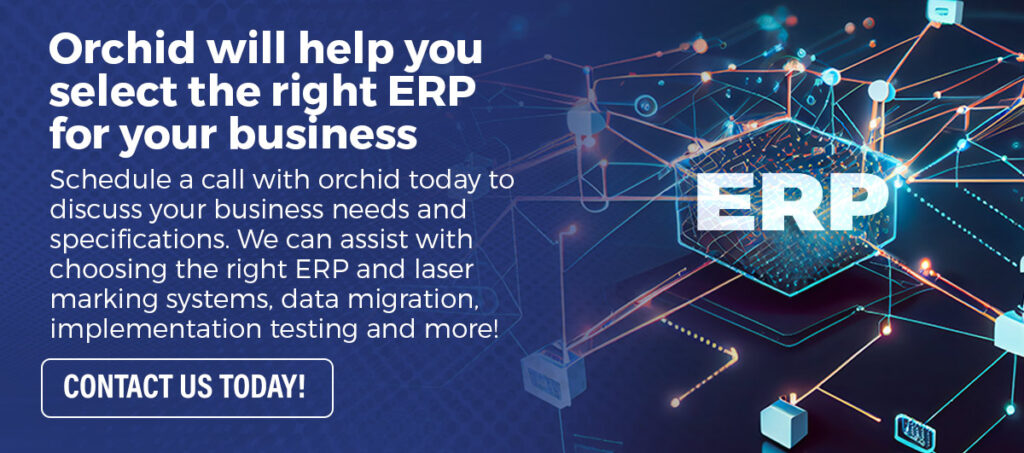In the dynamic landscape of the firearms industry, selecting the right Enterprise Resource Planning (ERP) system is a critical decision that directly impacts compliance, efficiency, and overall business success. The complexities of ATF regulations add an additional layer of consideration, making it imperative for manufacturers to navigate ERP choices judiciously. This article sheds light on key considerations when choosing an ERP system in the firearms industry, emphasizing the nuances of ATF compliance, integration features, inherent ERP capabilities, and the crucial decision between cloud-based and on-premise solutions.
Understanding ATF Compliance
Before delving into ERP specifics, it’s crucial to clarify that no ERP system is inherently firearms industry compliant out of the box. When ERP vendors claim serialization, it signifies the ability to attribute serial numbers to inventory. However, true ATF compliance lies in the electronic bound books or paper-bound books, depending on the scale of operations.
The ATF doesn’t certify compliance applications. Any issues with your electronic bound book, if discovered during an inspection, could lead to non-compliance. It’s essential to handle such situations in collaboration with your software provider.
Facilitating serialization within an ERP involves laser integration, regulated configuration, and markings. This allows for traceability within the facility, facilitating inspections and recording. Future integration with ATF forms should also be a consideration.
Top ERP Integration Features:
Efficient integrations are vital for the successful implementation of an ERP system in firearm manufacturing. Let’s delve into the vital ERP integration features to consider for both the unique demands of the firearms industry and the seamless operation of general business processes.
Firearms Industry Specific Features:
- Bound Book Integration: Seamless integration is paramount, enabling the transfer of serial numbers to the electronic bound book.
- Laser Integration: Integration with laser technology ensures accurate marking and tracking of serial numbers.
- eForms Integration (Future-Ready): Consider future integration with ATF forms for enhanced compliance and reporting.
General Business Features:
- CRM Systems: CRM integration empowers effective customer management and marketing capabilities.
- eCommerce Integration: Connecting ERP with e-commerce platforms like Magento enhances online sales.
- Warehouse Management: Efficient warehouse management is crucial for streamlined inventory control.
Top Inherent ERP Features:
While acknowledging the significance of integrations, it’s crucial to explore the inherent features that shape the backbone of an ERP system. This section outlines firearm industry-specific and general business features that are intrinsic to ERP, ensuring a comprehensive understanding of the system’s capabilities.
Firearms Industry Specific Features:
- Master Data Configuration and Control: Customize part master fields to include crucial firearm-specific information.
- Serial Number Traceability at the Cell or Department Level: Enable tracing serial numbers to specific manufacturing cells or departments for inspections.
- Ability to Consume and Maintain a Serial Number: Essential for managing serial numbers as they transition from frames or receivers to finished firearms.
General Business Features:
- Inventory Management and Warehouse Management: Robust features for tracking firearm components and optimizing warehouse operations.
- Production Scheduling and Shop Floor Management: Effective tools for scheduling and managing production on the shop floor.
- Analytics and Reporting: Comprehensive reporting capabilities for data-driven decision-making.
Cloud-Based ERP Considerations:
The choice between cloud-based and on-premise ERP systems involves a careful evaluation of factors such as cost, scalability, control, and compliance. FFL manufacturers should choose the option that aligns with their specific business needs and growth strategies, ensuring long-term success and regulatory adherence.
Cloud-Based ERP:
- Lower Monthly Cost Structure: Cloud-based ERP systems typically operate on a subscription-based model, spreading costs over regular monthly payments. This can be advantageous for businesses, especially smaller ones, as it reduces the upfront financial burden.
- Greater Scalability and Accessibility: Cloud ERP solutions offer scalability, allowing businesses to adjust resources and functionalities as needed. This scalability is particularly beneficial for growing FFL manufacturers. Additionally, being cloud-based facilitates remote access, enabling authorized personnel to manage operations from anywhere, which can be crucial in a dynamic industry.
- Easier Adoption of Upgrades: Updates and upgrades are handled by the ERP vendor in a cloud environment. This ensures that your system is always running on the latest version, and new features or security patches are seamlessly integrated without requiring significant effort from your internal IT team.
- ITAR-Compliant Solutions: Cloud ERP solutions can be designed to meet ITAR (International Traffic in Arms Regulations) compliance. While concerns about data security in the cloud are common, modern cloud-based applications implement robust security measures to protect sensitive information, ensuring that ITAR requirements are met.
On-Premise ERP:
- Potential for Lower Lifetime Cost of Ownership: Although the upfront costs for on-premise ERP systems can be higher, some businesses find that the total cost of ownership over the system’s lifespan may be lower. This is especially true if the software license is purchased outright, and ongoing costs are primarily associated with maintenance and occasional upgrades.
- Greater Control Over Database and Security: On-premise solutions provide a higher level of control over your ERP environment. This is particularly relevant for FFL manufacturers who may have specific security concerns or ITAR restrictions. With the ERP system and data residing on-site, businesses have more direct control over access and security protocols.
- Slower Deployment Process and Upfront Hardware Costs: Deploying an on-premise ERP system often involves a longer setup time compared to cloud-based solutions. Additionally, businesses need to invest in and maintain the necessary hardware infrastructure, including servers. While this may result in longer lead times, it provides a more tangible and customizable IT environment.
- Considerations for ITAR Compliance: For FFL manufacturers subject to ITAR regulations, it’s crucial to ensure that on-premise solutions are designed and configured to comply with ITAR restrictions. This might include implementing access controls and encryption measures to safeguard sensitive information.
Choosing Between Cloud and On-Premise:
- Business Size and Structure: Small to medium-sized FFL manufacturers may find the scalability and flexibility of cloud-based ERP systems more suitable. Larger enterprises with significant IT resources and specific security needs might lean towards on-premise solutions.
- Budget Constraints: Consider the financial implications, both short-term and long-term. Cloud solutions offer more predictable monthly costs, while on-premise solutions might involve higher upfront expenditures.
- IT Infrastructure and Expertise: Assess your existing IT infrastructure and the expertise of your IT team. Cloud solutions alleviate the need for extensive in-house IT support, while on-premise solutions require a robust internal IT team or reliance on external support.
- Regulatory Compliance Requirements: Factor in industry-specific regulations, such as ITAR in the firearms industry. Both cloud and on-premise solutions can be configured to comply, but it’s essential to verify that the chosen system aligns with regulatory standards.
Choosing the Right ERP Solution:
In the firearms industry, the landscape of ERP solutions varies based on the size and needs of manufacturers. While industry giants like Oracle, SAP, and Microsoft Dynamics serve larger corporations, the majority of firearm manufacturers are mid-sized organizations. As a result, Oracle NetSuite is frequently favored for its compatibility with the industry’s right-sized requirements. It’s important to note that this observation doesn’t constitute an endorsement but rather reflects their widespread usage within the sector.
*Most Common Firearms Industry Applications
**Open Source
Conclusion
In conclusion, the firearms industry demands a meticulous approach when selecting an ERP system to ensure both operational excellence and adherence to regulatory standards. The journey begins with a deep understanding of ATF compliance, recognizing that ERP systems must seamlessly integrate with electronic bound books and other crucial facets of firearm manufacturing. Whether considering industry-specific features, general business functionalities, or the broader decision between cloud-based and on-premise solutions, manufacturers must weigh the unique demands of their operations against available options.
Contact Orchid today for assistance with your ERP implementation and integrations. Schedule a free consultation today at orchidadvisors.com/contact.








![2024 ATF FFL Inspection Violations [Published March 2025]](https://orchidadvisors.com/wp-content/uploads/2025/06/June-16-Blog-Post-ATF.png)
0 Comments